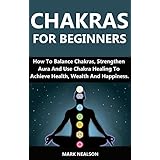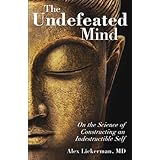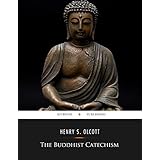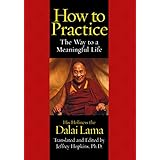APPENDIX
|
H. S. O.
FUNDAMENTAL BUDDHISTIC BELIEFS
I Buddhists are taught to show the same tolerance, forbearance, and brotherly love to all men, without distinction; and an unswerving kindness towards the members of the animal kingdom.
II The universe was evolved, not created; and its functions according to law, not according to the caprice of any God.
III The truths upon which Buddhism is founded are natural. They have, we believe, been taught in successive kalpas, or world-periods, by certain illuminated beings called BUDDHAS, the name BUDDHA meaning "Enlightened".
IV The fourth Teacher in the present kalpa was Sākya Muni, or Gautama Buddha, who was born in a Royal family in India about 2,500 years ago. He is an historical personage and his name was Siddhārtha Gautama.
V Sākya Muni taught that ignorance produces desire, unsatisfied desire is the cause of rebirth, and rebirth, the cause of sorrow. To get rid of sorrow, therefore, it is necessary to escape rebirth; to escape rebirth, it is necessary to extinguish desire; and to extinguish desire, it is necessary to destroy ignorance.
VI Ignorance fosters the belief that rebirth is a necessary thing. When ignorance is destroyed the worthlessness of every such rebirth, considered as an end in itself, is perceived, as well as the paramount need of adopting a course of life by which the necessity for such repeated rebirths can be abolished. Ignorance also begets the illusive and illogical idea that there is only one existence for man, and the other illusion that this one life is followed by states of unchangeable pleasure or torment.
VII The dispersion of all this ignorance can be attained by the persevering practice of an all-embracing altruism in conduct, development of intelligence, wisdom in thought, and destruction of desire for the lower personal pleasures.
VIII The desire to live being the cause of rebirth, when that is extinguished rebirths cease and the perfected individual attains by meditation that highest state of peace called Nirvāna.
IX Sākya Muni taught that ignorance can be dispelled and sorrow removed by the knowledge of the four Noble Truths, viz.:
1. The miseries of existence;
2. The cause productive of misery, which is the desire ever renewed of satisfying oneself without being able ever to secure that end;
3. The destruction of that desire, or the estranging of oneself from it;
4. The means of obtaining this destruction of desire. The means which he pointed out is called the Noble Eightfold Path, viz.: Right Belief; Right Thought; Right Speech; Right Action; Right Means of Livelihood; Right Exertion; Right Remembrance; Right Meditation.
X Right Meditation leads to spiritual enlightenment, or the development of that Buddha-like faculty which is latent in every man.
XI The essence of Buddhism, as summed up by the Tathāgathā (Buddha) himself, as:
To cease from all sin,
To get virtue,
To purify the heart.
XII The universe is subject to a natural causation known as "Karma". The merits and demerits of a being in past existences determine his condition in the present one. Each man, therefore, has prepared the causes of the effects which he now experiences.
XIII The obstacles to the attainment of good karma may be removed by the observance of the following precepts, which are embraced in the moral code of Buddhism, viz.: (1) Kill not; (2) Steal not; (3) Indulge in no forbidden sexual pleasure; (4) Lie not; (5) Take no intoxication or stupefying drug or liquor. Five other precepts which need not be here enumerated should be observed by those who would attain, more quickly than the average layman, the release from misery and rebirth.
XIV Buddhism discourages superstitious credulity. Gautama Buddha taught it to be the duty of a parent to have his child educated in science and literature. He also taught that no one should believe what is spoken by any sage, written in any book, or affirmed by tradition, unless it accord with reason.
Drafted as a common platform upon which all Buddhists can agree.
H. S. OLCOTT, P.T.S.
Respectfully submitted for the approval of the High Priests of the nations which we severally represent, in the Buddhist Conference held at Adyar, Madras, on the 8th, 9th, 10th, 11th, and 12th of January, 1891 (A.B. 2434).
Japan . . . . . ( Kozen Gunaratana
( Chiezo Tokuzawa
Burmah . . . . . U. Hmoay Tha Aung
Ceylon . . . . . Dhammapala Hevavitarana.
The Maghs of
Chittagong . . . Krshna Chandra Chowdry, by
his appointed Proxy, Maung
Tha Dwe.
BURMAH
Approved on behalf of the Buddhists of Burmah, this 3rd day of February, 1891 (A. B. 2434):
Tha-tha-na-baing Saydawgyi; Aung Myi Shwebōn Sayadaw; Me-ga-waddy Sayadaw; Hmat-Khaya Sayadaw; Hti-lin Sayadaw; Myadaung Sayadaw; Hla-Htwe Sayadaw; and sixteen others.
CEYLON
Approved on behalf of the Buddhists of Ceylon this 25th day of February, 1891 (A.B. 2434); Mahannwara upawsatha puspārāma vihārādhipati Hippola Dhamma Rakkhita Sobhitābhidhāna Mahā Nāyaka Sthavirayan wahanse wamha.
(Hippola Dhamma Rakkhita Sabhitābhidhana, High Priest of the Malwatta Vihare at Kandy).
(Sd.) HIPPOLA.
Mahanuwara Asgiri vihārādhipati Yatawattē Chandajottyābhidhana Mahā Nāyaka Sthavirayan wahanse wamha—(Yatawattē Chandajottyābhidhana, High Priest of Asgiri Tihare at Kandy).
(Sd.) YATAWATTE
Hikkaduwe Srī Sumangala Sripādasthāne saha Kolamba palate pradhāna Nāyaka Sthavirayo (Hikkaduwe Srī Sumangala, High Priest of Adam's Peak and the District of Colombo).
(Sd.) H. SUMANGALA
Maligawe Prāchina Pustakālāyadhyakshaka Surīyagoda Sonuttara Sthavirayo (Suriyagoda Sonuttara, Librarian of the Oriental Library at the Temple of the Tooth Relic at Kandy).
(Sd.) S. SONUTTARA
Sugata Sāsanadhaja Vinayā chāriya Dhammalankārābhidhāna Nāyaka Sthavira.
(Sd.) W. DHAMMALANKARA
Pawara neruttika chariya Mahā Vibhavi Subhuti of Waskaduwa.
(Sd.) W. SUBHUTI
JAPAN
Accepted as included within the body of Northern Buddhism.
Shaku Genyu (Shingon Shu)
Fukuda Nichiyo (Nichiren " )
Sanada Seyko (Zen " )
Ito Quan Shyu ( " " )
Takehana Hakuyo (Jodo " )
Kono Rioshin (Ji-Shu " )
Kiro Ki-ko (Jodo Seizan " )
Harutani Shinsho (Tendai " )
Manabe Shun-myo (Shingon " )
CHITTAGONG
Accepted for the Buddhists of Chittagong.
Nagawa Parvata Vihāarādhipati
Guna Megu Wini-Lankara,
Harbing, Chittagong, Bengal.
BIBLIOGRAPHY
The Buddhist Catechism has been compiled from personal studies in Ceylon, and in part from the following works:
Vinaya Texts . . . . . . . . . . . . . . Davids and Oldenberg.
Buddhist Literature in China . . . . . . Beal.
Catena of Buddhist Scriptures . . . . . Do.
Buddhaghosa's Parables . . . . . . . . . Rogers.
Buddhist Birth Stories . . . . . . . . . Fausboll and Davids.
Legend of Gautama . . . . . . . . . . . Bigandet.
Chinese Buddhism . . . . . . . . . . . . Edkins.
Kalpa Sutra and Nava Patva . . . . . . . Stevenson.
Buddha and Early Buddhism . . . . . . . Lillie.
Sutta Nipāta . . . . . . . . . . . . . . Sir Coomara Swami.
Nāgananda . . . . . . . . . . . . . . . Broyd.
Kusa Jataka . . . . . . . . . . . . . . Steele.
Buddhism . . . . . . . . . . . . . . . . Rhys-Davids.
Dhammapada . . . . . . . . . . . . . . . Fausboll and Max Müller.
Romantic History of Buddha . . . . . . . Beal.
Udānavarga . . . . . . . . . . . . . . . Rockhill.
Twelve Japanese Buddhist Sects . . . . . B. Nanjio.
The Gospel of Buddha . . . . . . . . . . Paul Carus.
The Dharma . . . . . . . . . . . . . . . Do.
Ancient India . . . . . . . . . . . . . R. C. Dutt.
The "Sacred Books of the East" Series . Max Müller's Edition.
Encyclopædia Britannica
Printed by
Annie Besant
Vasanta Press
Adyar Madras
|








No comments:
Post a Comment